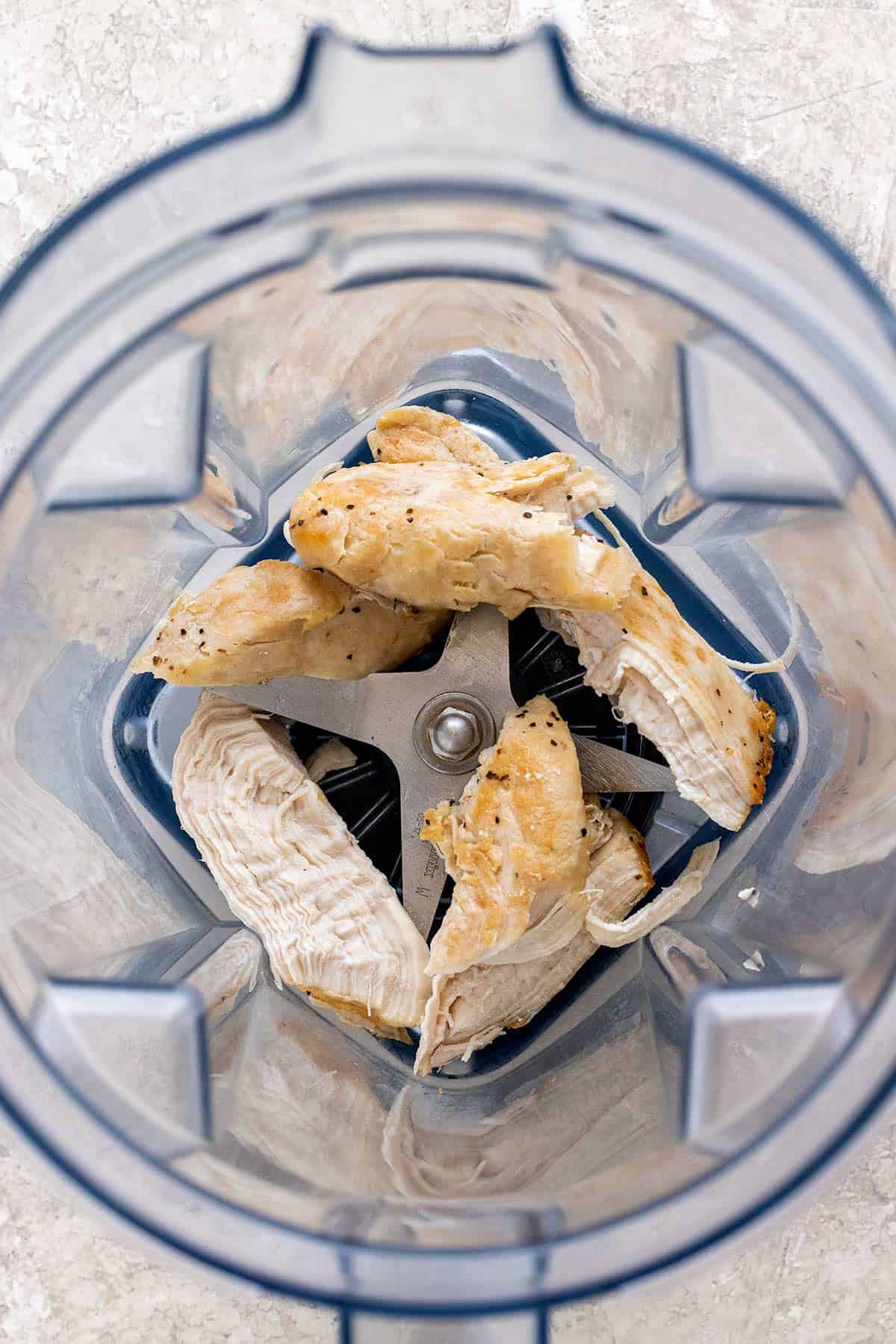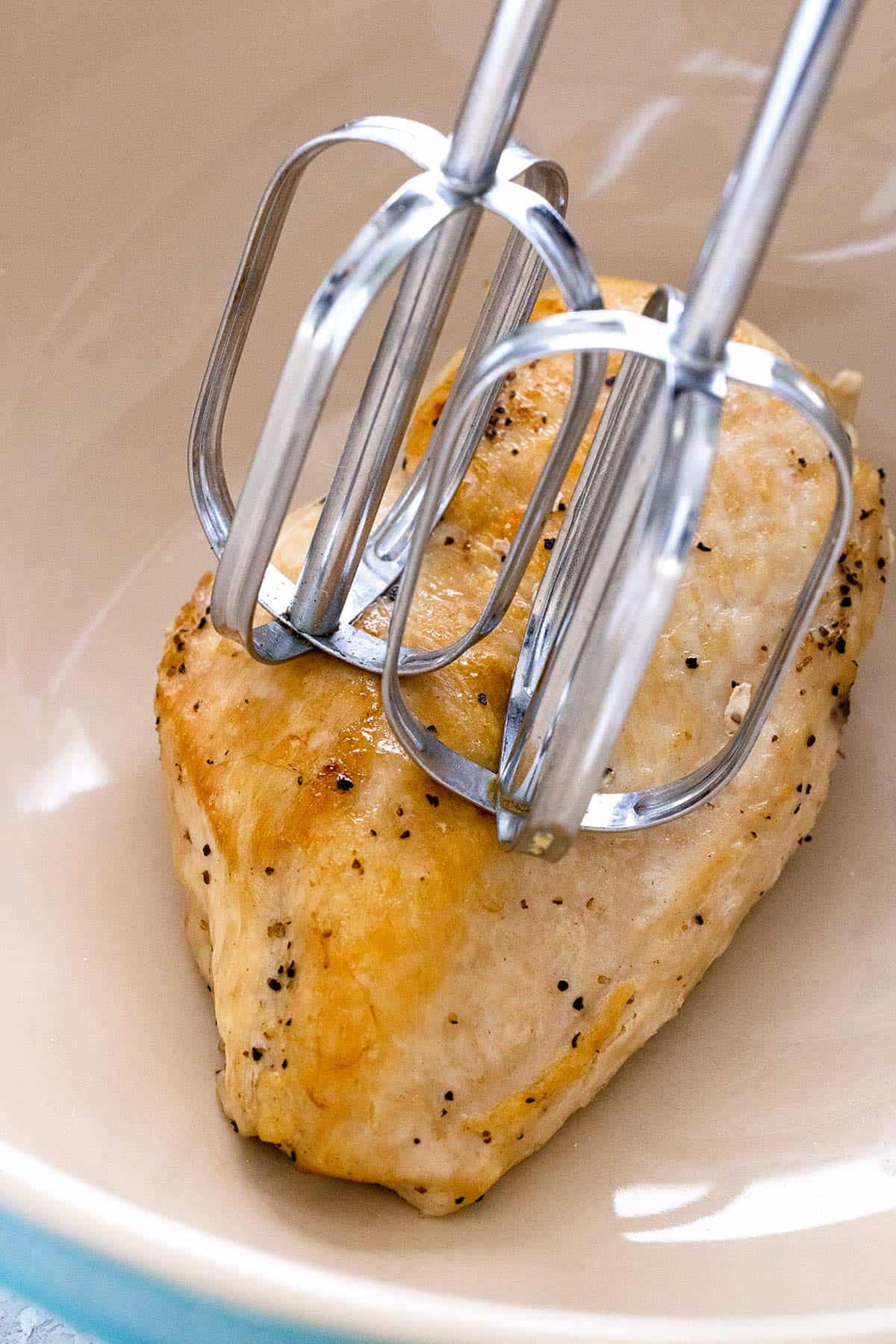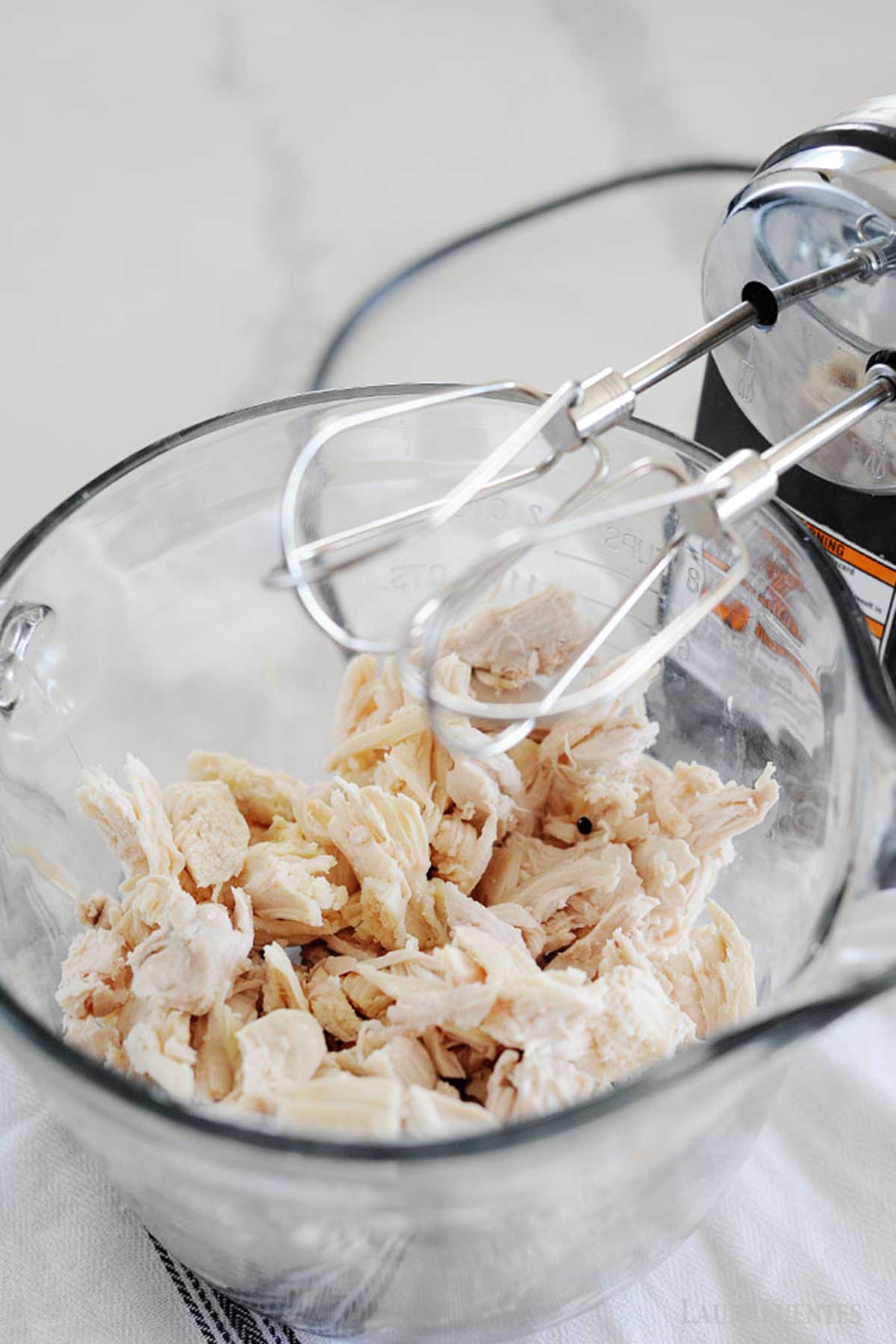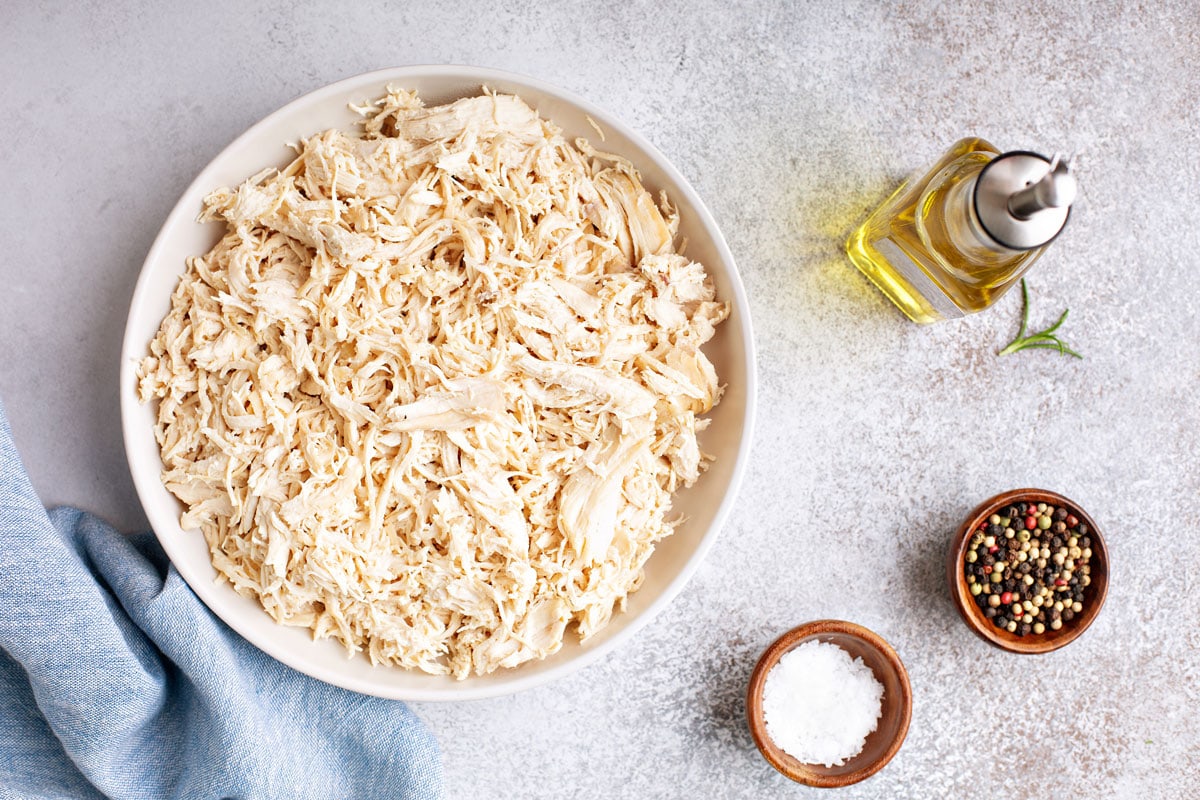
Introduction
Shredded chicken is a versatile and convenient ingredient used in a variety of recipes, from sandwiches to salads and soups. While traditional methods like using forks or knives can be time-consuming and labor-intensive, some people wonder if a blender can be used to shred chicken quickly and efficiently. While a blender can help achieve shredding consistency, there are certain considerations to keep in mind. In this guide, we will explore the pros and cons of using a blender to shred chicken, along with alternative methods that may suit your needs.

Should I shred chicken in a blender?
I. Understanding the Shredding Process
-
Shredded Chicken Texture:
- Shredded chicken is characterized by its fine, stringy texture, commonly achieved by separating the cooked chicken into thin, thread-like pieces.
-
Traditional Shredding Methods:
- The most common traditional methods for shredding chicken include using forks or knives to manually pull or cut the chicken into desired sizes. These methods are relatively simple but can be time-consuming, especially when dealing with larger quantities of chicken.
II. Pros of Using a Blender to Shred Chicken
-
Time Efficiency:
- Using a blender can significantly reduce the time required to shred chicken. With the proper technique, a blender can efficiently shred a larger quantity of chicken in seconds, saving valuable time in the kitchen.
-
Consistent Shredding:
- Blenders can provide consistent results by ensuring that the chicken is shredded into uniformly sized pieces. This consistent texture can be desirable in recipes where even distribution of shredded chicken is important.
-
Convenience:
- For those with limited mobility or hand dexterity, using a blender to shred chicken can be a more accessible option. It requires less physical effort compared to manual shredding methods, making it easier and more efficient.

III. Cons of Using a Blender to Shred Chicken
-
Texture Alteration:
- When using a blender, the sharp blades and rapid blending action can quickly break down the chicken into fine particles, resulting in a texture that is finer than traditional shredded chicken. This altered texture may not be suitable for all recipes or dishes.
-
Over-blending Risks:
- It is crucial to exercise caution when using a blender to shred chicken to avoid over-processing the meat. Over-blending can turn the chicken into a mushy consistency, which may not be desirable for recipes requiring distinct shreds.
-
Loss of Moisture and Juiciness:
- The rapid blending action and heat generated in the blender can cause the chicken to lose moisture and natural juices, potentially leading to a drier end result. This can affect the overall flavor and mouthfeel of the shredded chicken.
-
Blender Cleanup:
- Blenders can be difficult to clean, particularly when dealing with sticky or greasy meat residues. The small crevices and sharp blades can make thorough cleaning a challenge, extended cleanup time, and requiring some disassembly.

IV. Tips for Shredding Chicken in a Blender
-
Cook and Cool the Chicken:
- Ensure the chicken is fully cooked before attempting to shred it in a blender. Let the cooked chicken cool slightly to avoid excessive steam or moisture while blending.
-
Cut Chicken into Smaller Pieces:
- Cut the chicken into smaller pieces, such as strips or bite-sized chunks. This will help ensure that the blender effectively processes the chicken and aids in achieving desired shredding consistency.
-
Pulse and Blend Technique:
- To avoid over-processing and turning the chicken into a mushy texture, use a pulse and blend technique. Pulse the blender in short bursts, continuously checking the texture and stopping before reaching an undesirable consistency.
-
Monitor Time and Blending Intervals:
- Keep a close eye on the chicken’s texture and progress during blending. Monitor the time and blending intervals to prevent over-blending and maintain a desirable shredded texture.
V. Alternative Methods for Shredding Chicken
-
Fork Method:
- The fork method involves holding a cooked chicken breast with one fork and using another fork to pull the meat apart, creating shreds. This method allows for control over the texture and is suitable for smaller amounts of chicken.
-
Knife Method:
- The knife method involves using two knives or a knife and a fork to cut and shred the chicken into desired sizes. This method provides more control and allows for greater customization of the shredded chicken’s consistency.
-
Stand Mixer Method:
- An alternative to using a blender is to use a stand mixer fitted with a paddle attachment. Place the cooked chicken in the bowl and let the mixer run on low speed until the desired shredding consistency is achieved.
-
Hand Mixer Method:
- Similar to the stand mixer method, a hand mixer with beaters can be used to shred chicken. Place the cooked chicken in a deep bowl or mixing container and use the hand mixer on low speed until the chicken is shredded to your preference.
VI. Considering the Recipe and Personal Preferences
-
Recipe Requirements:
- Consider the specific recipe you plan to use the shredded chicken in. Some recipes may call for traditional shredded chicken, while others may benefit from a finer, blender-shredded consistency. Choose the method that best suits the specific recipe’s requirements.
-
Personal Texture Preference:
- Take into account your personal preference for shredded chicken texture. If you enjoy chunkier or larger shreds in your dishes, manual shredding methods with forks or knives may be more suitable. If consistent, finer shreds are desirable, a blender may be a better choice.

VIII. Cleaning and Caring for Your Blender
-
Immediate Rinse:
- After blending the chicken, immediately rinse the blender jar or container with hot soapy water to remove any residue. This will help prevent the meat from drying and sticking to the blender, making it easier to clean later.
-
Dismantle and Soak:
- For thorough cleaning, disassemble the blender by removing the blades, gasket, and other removable parts. Soak these parts in warm soapy water to loosen any grease or remaining meat particles. Use a soft brush or sponge to scrub away any stubborn residue.
-
Clean the Blender Base:
- Wipe down the blender base with a damp cloth or sponge to remove any residue or spills. Be cautious not to immerse the base in water or expose it to excessive moisture, as this can damage the motor or electrical components.
-
Dry Thoroughly:
- After cleaning, ensure that all blender parts are thoroughly dried before reassembling or storing them. This will help prevent the growth of mold or bacteria and prolong the lifespan of your blender.

VII. Conclusion: A Matter of Preference and Practicality
Choosing whether to shred chicken in a blender ultimately depends on personal preferences, recipe requirements, and practical considerations. While a blender can offer time efficiency and consistent results, it may result in altered texture and require additional cleanup. Alternatively, traditional manual methods using forks or knives, as well as alternative methods like a stand mixer or hand mixer, offer greater control and customization.
Consider the specific recipe, desired shredded chicken texture, and the practicality of each method to determine which approach best suits your needs. Whatever method you choose, the goal is to enjoy the convenience and versatility of shredded chicken in your culinary creations.